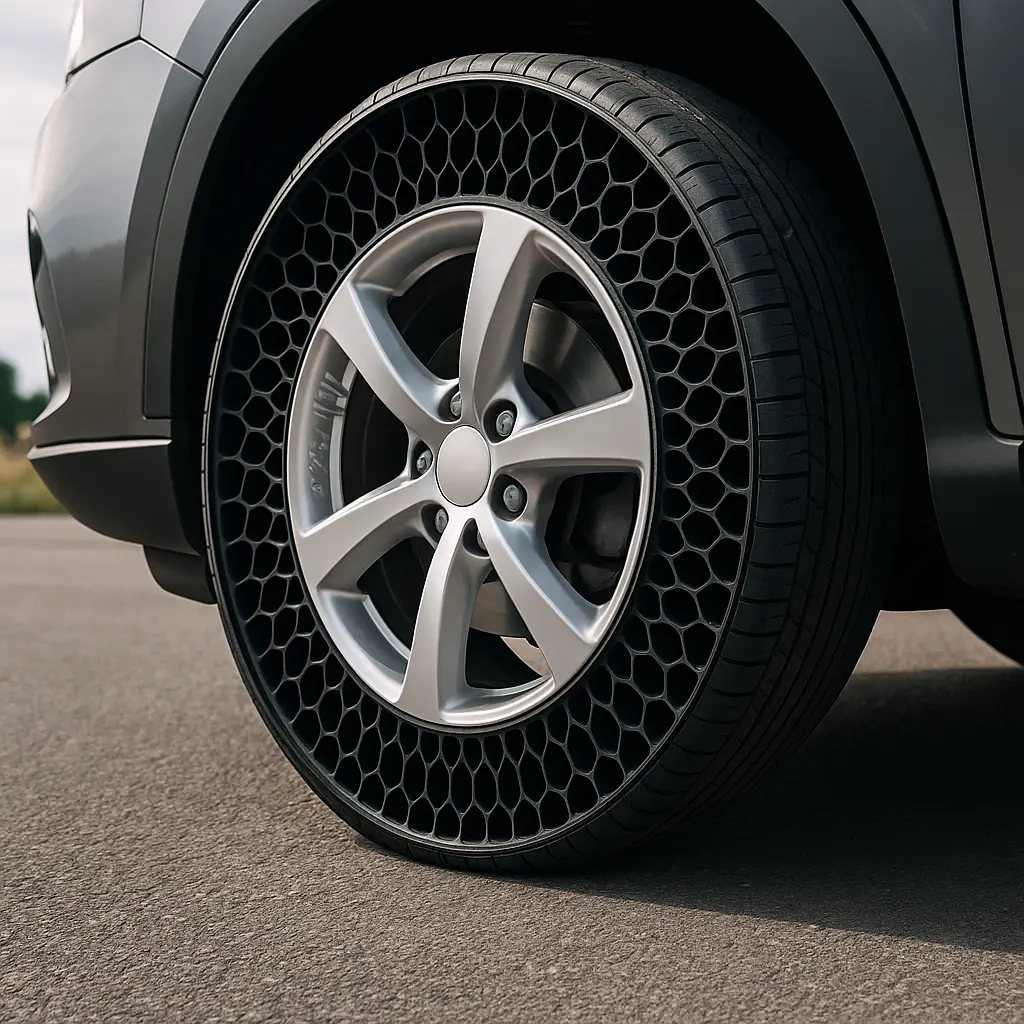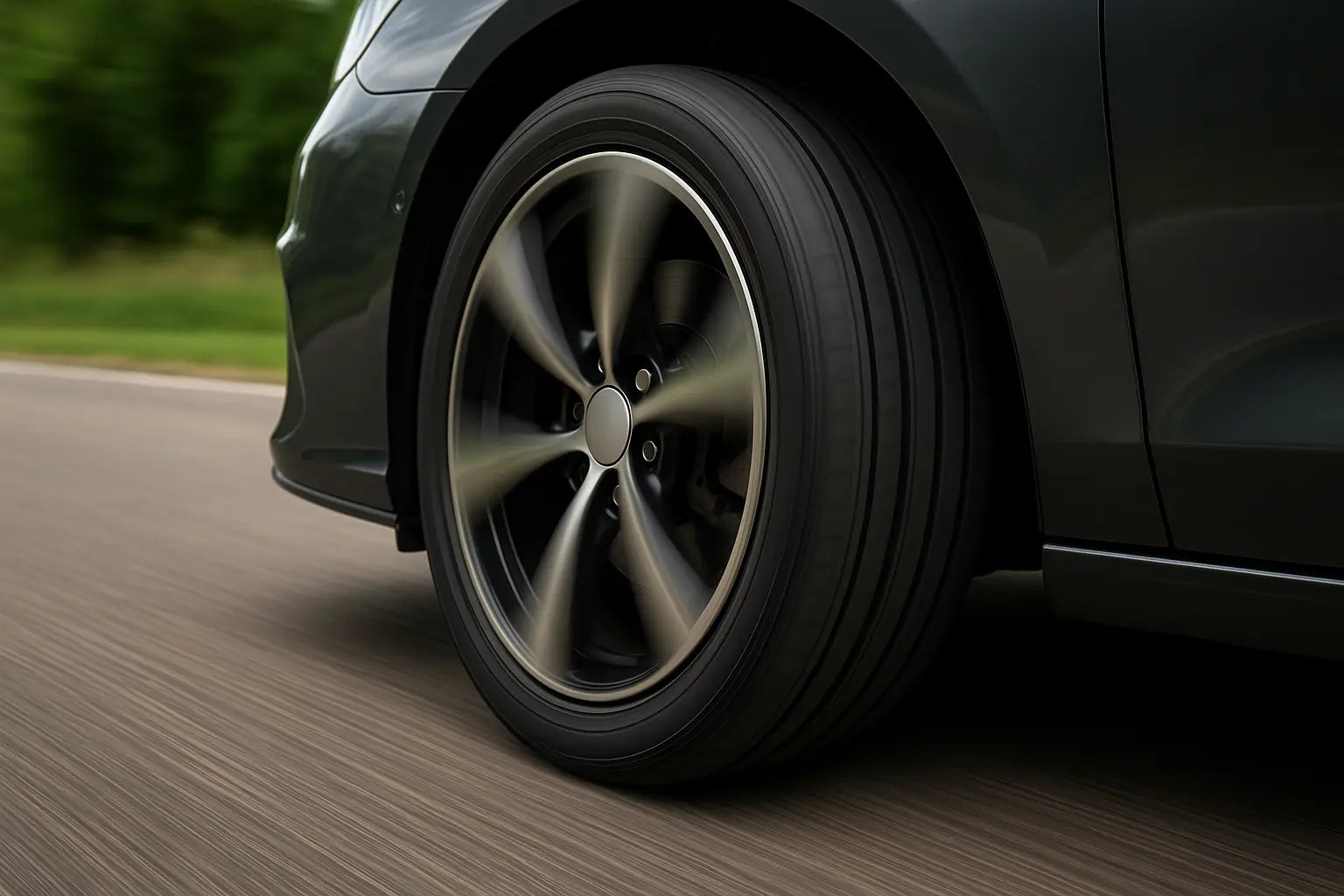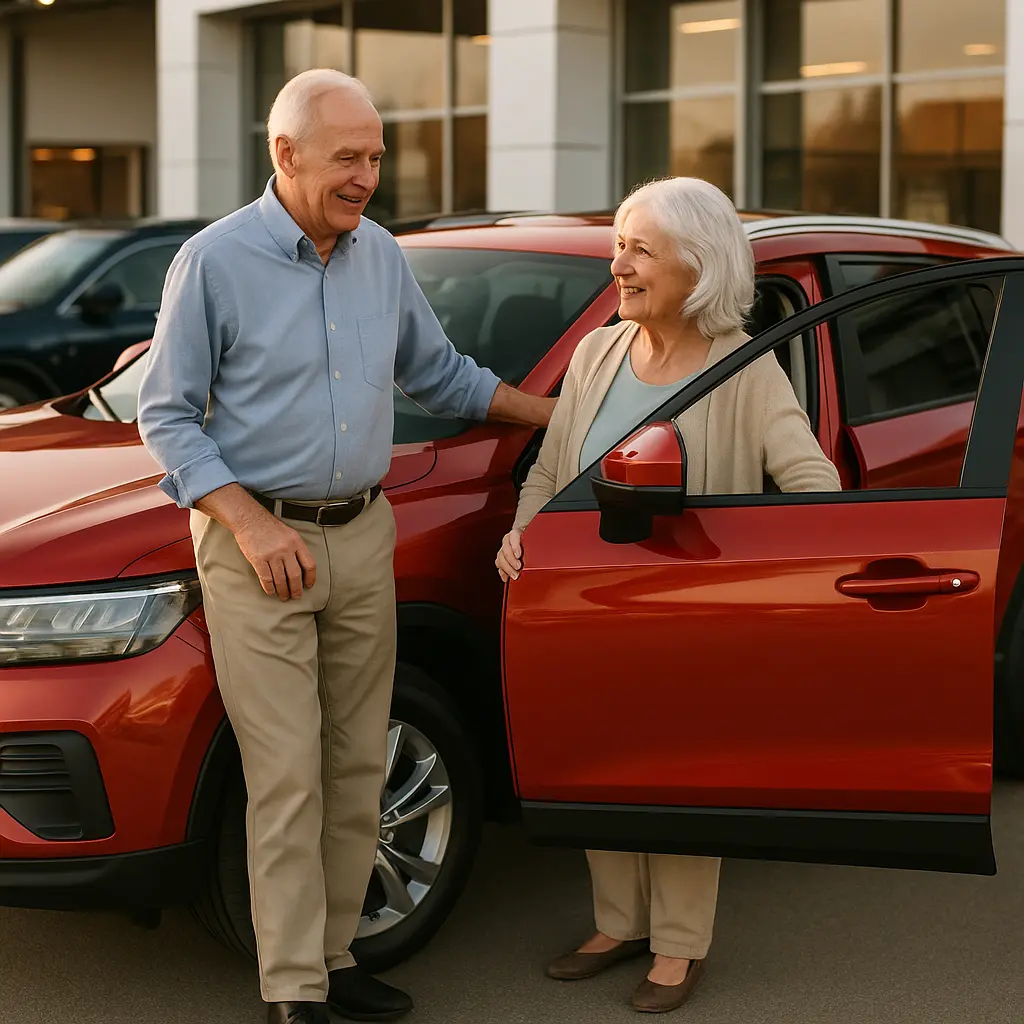How Car Tyre Tech Has Changed – Run Flats, Foam & More in 2025

Tyres have come a long way from simple rubber rings filled with air. In 2025, tyre technology has evolved dramatically — not only improving how cars drive, but also playing a vital role in safety, efficiency, and convenience. As Australia’s roads change and vehicles shift to electric, hybrid, and advanced tech platforms, tyres have followed suit.
In this comprehensive guide, we explore the latest tyre innovations including run-flat tyres, self-sealing systems, noise-reducing foams, smart sensors, and even airless options. Whether you're a tradie driving a dual-cab ute or a city dweller in an EV hatchback, the tyres beneath you are smarter and more sophisticated than ever.
1. The Evolution of Tyres: Then vs Now
Let’s quickly reflect on where we started:
Old school tyres:
- Depended entirely on air pressure.
- Required manual checks for punctures and inflation.
- Often noisy and prone to flats.
- Minimal grip in wet conditions.
- No integrated tech.
Today’s tyres in 2025:
- Run-flat and self-sealing for safer long-distance driving.
- Integrated sensors to communicate pressure, temperature, and wear.
- Noise-cancelling foam inserts.
- EV-optimised tread for instant torque.
- Some are even airless — a bold step toward maintenance-free driving.
2. Run-Flat Tyres – Drive Even With a Puncture
What are run-flat tyres?
Run-flat tyres (RFTs) are designed to continue functioning even after a complete loss of air pressure. They typically let drivers travel up to 80 km at reduced speeds (usually around 80 km/h) even with a puncture.
Advantages:
- No need for a spare tyre.
- Saves boot space and weight.
- Safer during high-speed punctures.
- Common in luxury and European cars in Australia (BMW, Mercedes-Benz, Lexus).
Limitations:
- Harsher ride due to stiff sidewalls.
- Costlier than standard tyres.
- Limited repair options – often need replacement after use.
2025 update:
New-gen run-flats have improved comfort through hybrid sidewall reinforcement, offering better shock absorption and less road noise. More affordable brands like Continental and Bridgestone now offer mid-range run-flat options in Australia.
3. Self-Sealing Tyres – Automatic Puncture Protection
Self-sealing tyres are embedded with a viscous sealant that plugs small punctures (typically up to 5mm) as soon as they occur.
Popular brands offering them in 2025:
- Michelin SelfSeal
- Pirelli Seal Inside
- Hankook Sealguard
Best use case?
Urban driving, daily commutes, and fleet vehicles. In Australia, they’re becoming increasingly popular for Uber, delivery services, and family SUVs.
Why they matter:
- Zero downtime on small punctures.
- Avoid sudden air loss.
- Ideal for highways and rural Aussie roads where help is far away.
4. Airless Tyres – The Future Is Already Here
Airless or non-pneumatic tyres (NPT) are designed with a solid inner structure that doesn’t rely on air at all.
Advantages:
- No punctures, ever.
- No need for pressure monitoring or inflating.
- Extremely durable for rugged environments.
2025 Reality Check in Australia:
- Not yet mainstream but starting to appear in military, mining, and niche commercial applications.
- Michelin’s Uptis and Goodyear’s reCharge concept are gaining attention globally.
Expect them to hit broader commercial and off-road markets in Australia in the next 2–3 years.
5. Foam-Lined Tyres – Quieter Rides for EVs and Luxury Cars
Tyre noise becomes more noticeable in EVs since there’s no engine rumble. That’s where noise-reduction technology comes in, such as polyurethane foam linings inside the tyre.
Key features:
- Reduces cabin noise by 20–25%.
- Popular in premium tyres like Michelin Acoustic and Pirelli PNCS.
- Standard in many EVs like Tesla Model 3, Hyundai Ioniq 5, Kia EV6, and BMW i4.
Why it matters in 2025:
- More EVs on Australian roads = more demand for quiet, refined driving experiences.
6. Smart Tyres with Built-in Sensors
The rise of connected vehicles has extended to tyres.
Smart tyre features in 2025:
- Pressure monitoring (TPMS) – now mandatory in most new cars.
- Temperature and wear tracking.
- Integration with in-car displays and apps.
- Real-time alerts for punctures, overheating, or tread wear.
Example:
Bridgestone’s ‘Enliten’ system and Pirelli Cyber Tyre transmit data directly to your car’s brain. In the future, they could even link to autonomous vehicle systems.
7. Tyres for Electric Vehicles – Grip, Silence & Efficiency
EVs are heavier and generate instant torque — meaning tyres must be:
- Stronger to handle weight.
- Quieter for cabin comfort.
- Low rolling resistance for better range.
2025 EV-specific tyre trends:
- Larger rim sizes (19–21 inches).
- Foam insulation.
- Low-rolling-resistance compounds.
- Directional tread patterns.
Popular in Australia:
Michelin e.Primacy, Hankook iON, Bridgestone Turanza EV, Continental EcoContact 6.
8. Tread Design – Not Just About Looks
Modern tread designs now optimise:
- Wet grip (with deeper sipes).
- Aquaplaning resistance.
- Heat dissipation for highway use.
- Lower wear on city streets.
All-season tyres in Australia are gaining traction (pun intended) in urban areas, with growing availability in Sydney, Melbourne, and Perth due to more mild seasonal shifts.
9. Sustainable Tyre Technology – Eco-Friendly Choices in 2025
With Australia pushing toward net-zero targets, tyre makers are also going green.
2025 sustainability trends:
- Recycled materials (silica, oils, rubber).
- Bio-based compounds (e.g. dandelion-derived rubber).
- Retreadable tyres for commercial fleets.
- Reduced microplastic shedding.
Notable innovations:
- Continental’s EcoContact using PET bottles.
- Michelin’s target of 100% sustainable tyres by 2050.
10. Tyre Buying Tips for Aussies in 2025
If you're shopping for tyres today, here’s what to look for:
1. Match to your use:
- Long-distance = look for durability and fuel savings.
- City = prioritise noise and ride comfort.
- Off-road = tread depth and sidewall strength matter.
2. Check sidewall markings:
Tyre size, load rating, speed index – all crucial.
3. Look for TPMS compatibility:
Ensure your tyres support pressure sensors if your car uses them.
4. Don’t chase the cheapest option:
A better tyre lasts longer, saves fuel, and boosts safety.
11. Run Flat vs Self-Sealing vs Standard – Quick Comparison
| Feature | Run-Flat | Self-Sealing | Standard |
|---|---|---|---|
| Drive After Puncture | Yes (limited) | Yes (small holes) | No |
| Comfort | Moderate | High | High |
| Cost | High | Medium | Low |
| Availability | Premium vehicles | Mid to high range | All vehicles |
| Repairs Allowed | Often not | Yes | Yes |
12. Cost Trends – Are Tyres Getting More Expensive?
Short answer: Yes – but value has increased.
- Tyres in 2025 offer 30–50% more life and better performance per km.
- Smart features mean fewer surprises and safer driving.
- Expect to pay $150–$350 per tyre for mid-range models in Australia.
- Premium run-flats or EV-optimised tyres can exceed $500 per corner.
Pro tip:
Shop during seasonal promotions (EOFY, Black Friday) and look for bundled deals at tyre retailers.
13. What’s Next in Tyre Tech?
By 2030, expect to see:
- Mass adoption of airless tyres in delivery and fleet vehicles.
- Tyres that adapt tread based on road surface (shape-shifting materials).
- In-wheel sensors feeding data into ADAS systems and autonomous platforms.
- More manufacturers offering subscription tyre models for fleets.
Conclusion: Tyres Are No Longer Just Tyres
If you haven’t paid attention to your tyres lately, 2025 is the year to start. Whether it's foam-lining that gives your EV a silent ride, or run-flat tech that keeps your family safe on a weekend road trip, tyre tech is no longer boring.
These innovations mean you’ll spend less time worrying about flats, get better fuel economy, and enjoy a smoother, safer drive — whether you’re cruising down the M1 or heading into the bush.
So next time you’re due for a replacement, think beyond the rubber. You might be surprised at what your tyres can do.
Leave a comment
Your email address will not be published. Required fields are marked *




















